Today at the dollar store I noticed some decent looking lighters at the checkout. In particular, these were electronic lighters, which means that they are lit by a piezoelectric crystal rather than the traditional flint spinner. This is very common in larger barbecue lighters. I don't smoke, but I do take apart random dollar store products for fun, so I bought one to see what's inside.
Long story short, I got some pretty cool (small) arcs out of it. The details are later in the post. Here's one of the arcs:
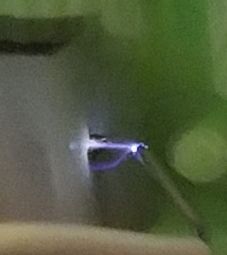
Here's the lighter itself, before I destroyed it taking it apart:
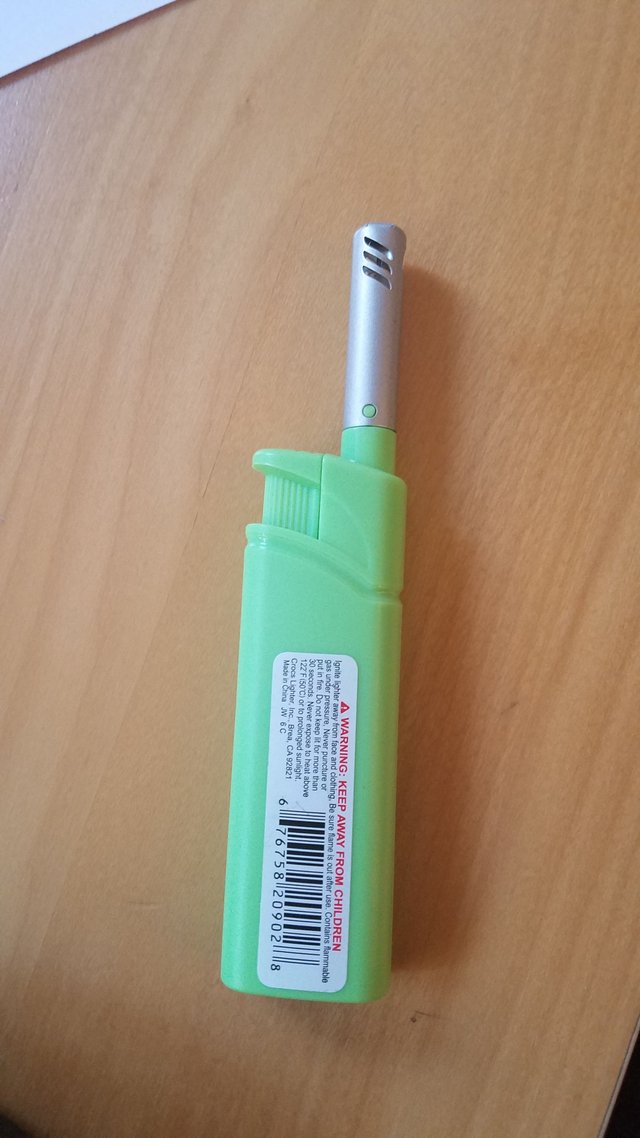
Unfortunately, as usual, whoever made this device did not want people taking it apart. Thankfully it wasn't too hard, although I did scratch up the case quite a bit getting a few screwdrivers under the exterior. Everything actually popped apart somewhat easily (I can't say the same for the dollar store bluetooth speaker I'm trying (and failing) to take apart without destroying it...). Inside, there aren't too many parts.
When you press the large green button, a metal lever opens the valve to the pressurized fuel container, which send gas up the tube. When the button is completely pressed in, a spring-loaded piston strikes a piezoelectric crystal, creating a very high alternating voltage, which is sent up between the (metal) gas feed tube and the metal cylinder on top of the lighter. The electric field builds up between a bent-inward point on the external cylinder and the feed line until the air breaks down and ionizes, conducting current across the air gap and igniting the fuel (quite literally miniature lightning), which produces the fire. The fire then keeps burning up the gaseous fuel until you let go of the button.
After removing the outer case and prying off the metal cylinder holding it in place, I got rid of all the gas tubing and the lever to hopefully prevent a leak. Under the button, inside a cavity in the gas storage container was the piezoelectric element:
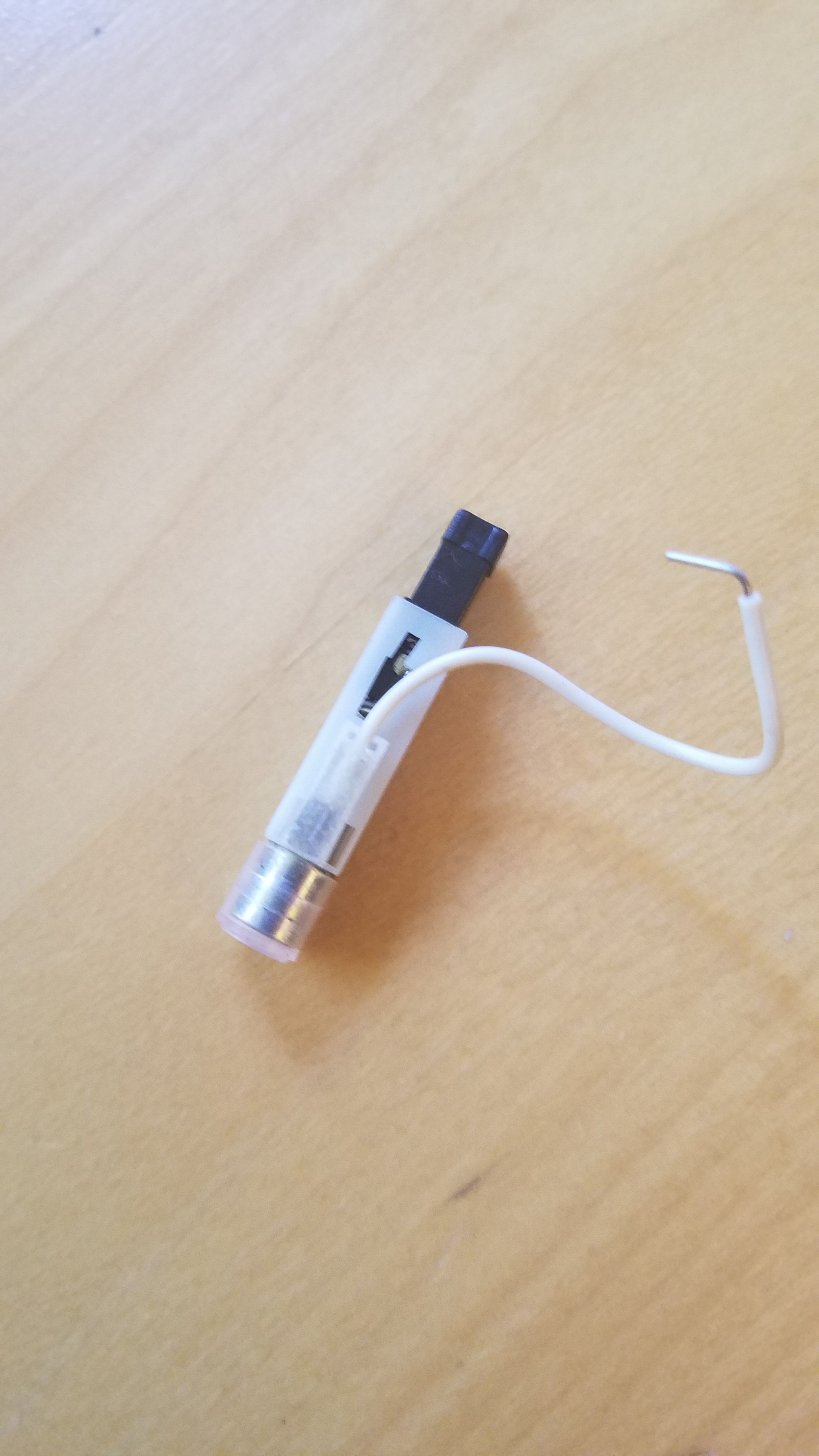
There's a spring inside that releases a piston (?) to actually trigger the piezoelectric element once you press the black button in all of the way. Notably, only one wire emerges from the device. This initially confused me - I've taken apart similar barbecue lighters before and they tend to have two wires, which you can then creates arcs between. With just one element, I wasn't sure how the device connected to the gas feed line since I had already taken apart the lever assembly.
The piezoelectric device alone is actually somewhat hard to use without gloves, since the black piston you have to press in is quite small and it's hard to get good leverage. To get around this I slotted it back inside the gas canister and put the button back on so that it would be easy to set off the piezoelectric element. Here's what the inside of the lighter looks like without most of the gas feed line:
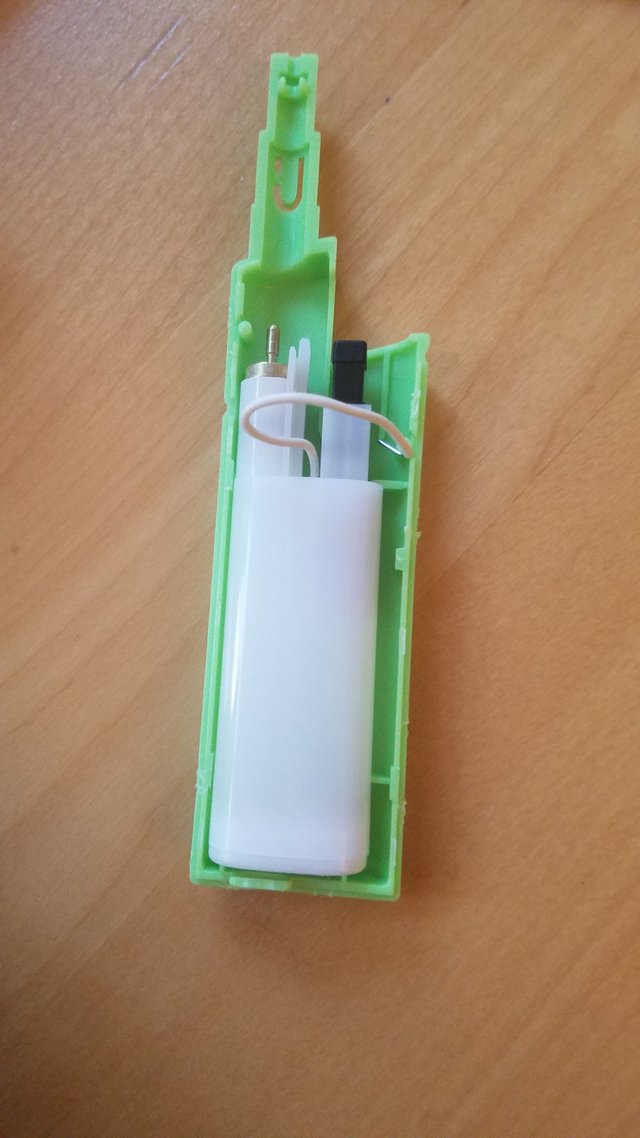
The wire was originally pressed against the outer metal cylinder. In order to try and possibly see where the other terminal of the HV output was, I put it somewhat near the metal valve, pressed the button, and:
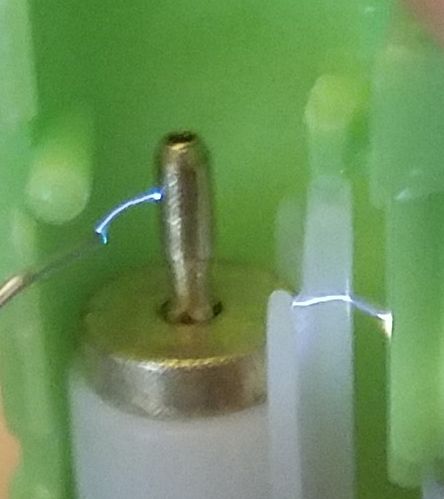
As you can see, two arcs were produced! It seems that the spring and other small bits of metal inside the piezo device are the other end of the high voltage output. The right arc is from a small area where these conductors are exposed, over the plastic barrier, to the conductive gas valve. Since the valve is metallic and therefore very conductive, another arc is produced at the top of the valve and travels to the second HV output wire.
This led me to conclude that the reason there is no second output wire is because, during normal use, an arc is produced between the metallic lever that opens the valve (not shown) and the metal internals of the spring-loaded piezo electric device. Then, a second arc is produced at the top of the device across the gas output to ignite the flame. Unfortunately I can't re-assemble this one due to significant damage opening it up, so I can't test this idea yet, but I'm fairly confident that this is how the lighter works under normal usage. To be honest I wouldn't have guessed they were using a double arc in regular usage - maybe it was cheaper to buy one-wire piezoelectric devices?
Now that I knew where the second output was, it was time to mess around and make some arcs. I don't have most of my equipment with me so I wasn't able to attach a wire and put the whole lighter back together to a make a mini push-button "stungun", so I just took some pictures using burst shot of some cool arcs between the two outputs. Here are some of the better pictures (I like the different colored plasmas!):
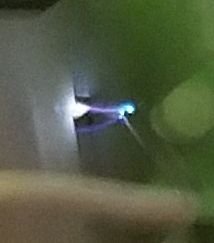
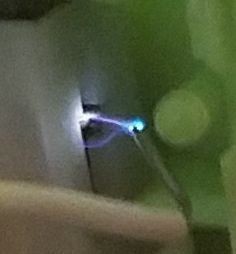
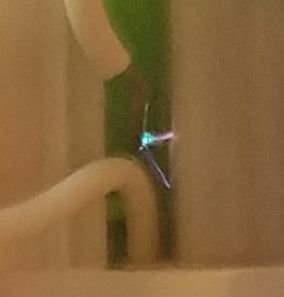
These arcs are all produced by a high electric field originating from the piezoelectric effect. When certain crystals are mechanically stressed in some way (impact, bending, etc) they will become polarized, producing a high electric field across the crystal. In this case, the electric field is high enough that it ionizes air (the arc). This effect is used in many other applications other than lighters: For example, most microwave buzzers are flat piezoelectric elements that use the reverse of the piezoelectric effect (apply electric field, get mechanical stress) to vibrate and generate sound. Of course whenever the piezoelectric effect works one way, it also works the other way: You can use microwave oven buzzers to generate a bit of electric energy from footsteps, for example.
So, what can this dissected lighter be used for? Off of the top of my head, I can think of a few somewhat silly ideas. If you could somehow rectify the high voltage (which I'm fairly sure comes out AC) you could use this as a hand powered way to charge HV capacitors (DO NOT DO THIS UNLESS YOU KNOW WHAT YOU ARE DOING, HV capacitors are very dangerous!). Attaching a usb male connector would probably make this device work as a USB killer, but that's not so useful as I don't exactly want to go around destroying computers.
In a previous post I talked about making XRays from high voltage supplies. While you could technically use this (like any high voltage source) to accelerate electrons to high speeds, I don't think the voltage is high enough to cross the 15 kV/15 keV electron tube escape threshold just based on the maximum arc length, and even if it was, the current is very low so you would have to have a decent detector. When I get back to campus in January I may try this out with one of my vacuum tubes just for fun and see if I was wrong and it does produce detectable XRays outside the tube. Here's my XRay post if you're interested!
By the way, I did accidentally shock myself while investigating how long the arcs can get. What I found out was that the arcs can get up to about a centimeter from this device, and that the shock feels like a very tiny punch to your hand. It's not dangerous or harmful due to low current output but it's pretty uncomfortable and I wouldn't rate it very highly.
I hope you enjoyed this post! Let me know if you have any ideas for using these cheap mini arc generators.
Thanks for reading!
All images in this post are my own.
Piezo-electric elements are very useful in many applications. Those things in lighters are only one of them.
In the 90s I build drum pads with Piezo sensors. The sensors were just small brass disks, very thin, like 0.2mm, and 20mm in diameter. on one side they were coated with a thin Piezo ceramic, and had two contact points, one on top of the coating and one on the brass itself.
They were very sensitive of being touched, knocked against or bending. Any of that would produce a small current that can be used as a trigger signal for a electronic, like a A/D converter..
I glued them under hard cardboard slabs with a hard rubber (for flooring) on the other side. It worked pretty well, and was durable too.
I guess you could use them for a lot of things, like alarm sensors for windows or under carpets.
I didn't find them in a dollar store though, but in a electronics supply shop. But they were cheap, like 50 cent a piece.
Definately something for a innovative person like you... :)
Downvoting a post can decrease pending rewards and make it less visible. Common reasons:
Submit
Those sound very similar to the microwave oven piezoelectric buzzers. I have a few I've pulled out and want to eventually make some sort of energy harvesting device with them. They are one of the easier ways to get electricity from random motion.
Thanks for sharing!
Downvoting a post can decrease pending rewards and make it less visible. Common reasons:
Submit
thanks for the information, you are the best
Downvoting a post can decrease pending rewards and make it less visible. Common reasons:
Submit
I used to play with these as a kid and even used them in a potato launcher but its cool to see someone go into detail on them. I always wondered how it could work with one wire and now I know.
Downvoting a post can decrease pending rewards and make it less visible. Common reasons:
Submit